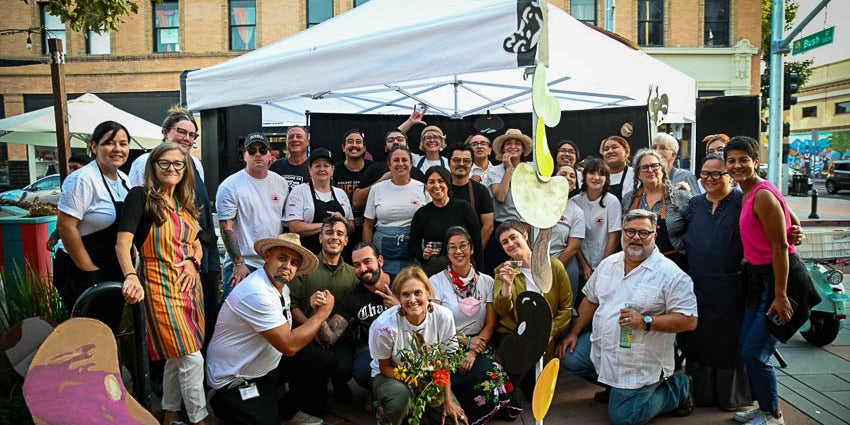





Whipple Bean
Free shipping on orders $50+
We are excited to introduce you to this historic heirloom from the Willamette Valley that somehow manages to be light and substantial at the same time.
These have quickly become one of the staff's favorite beans. Because they are mild, they're a great canvas for however you want to prepare them.
They look very similar to the classic Cargamanto bean from Colombia and they are likely related to the Spanish Tolosana bean from the Basque region.
This delicious bean comes with a lot of mystery. We know they've adapted beautifully to the Willamette Valley in Oregon but the question is whether they were brought by pioneers in the 19th century or by an associate of Dr. Martin Luther King, Jr in the 1970s. The only references seem to be from seed companies telling one or the other story.
Cooking Suggestions
Baked beans, soups, dips, casseroles, pot beans
From the Rancho Gordo Kitchen
A bowl of Whipple beans needs nothing more than a squeeze of lime and minced white onion, or perhaps some of your favorite salsa. They are also a stellar chili bean and make an excellent, but somewhat untraditional, refried bean.
Cooking Instructions
Check beans for debris, and rinse thoroughly. In a large pot, sauté aromatic vegetables (onions, garlic, celery, carrot, etc.) in olive oil. Add beans and enough water to cover by about 2 inches. Bring to a full boil for 10 to 15 minutes. Reduce heat to a gentle simmer, using a lid to help regulate the heat, and gently cook until done, 1 to 3 hours. Salt when the beans start to soften. A pre-soak of 2 to 6 hours will lessen the cooking time.
Similar to
Cranberry, Good Mother Stallard, Eye of the Goat, Pinto
Latin name
Phaseolus vulgaris
Country of origin
USA
"And yes, the beans really are better—and different—than the dusty bag you'll find on the shelves of most supermarkets."
Margaret Eby
Food + Wine Magazine


